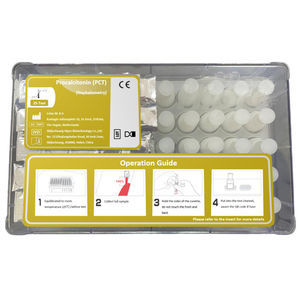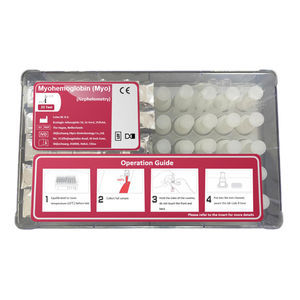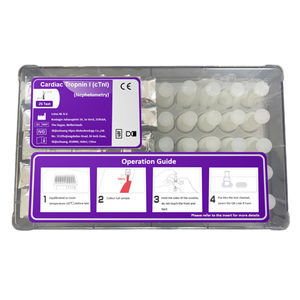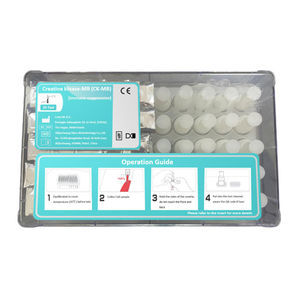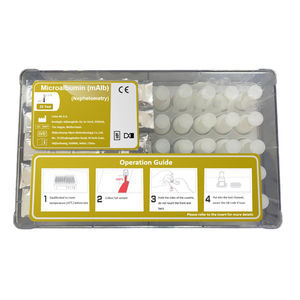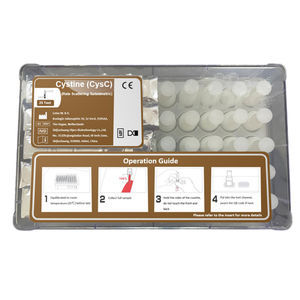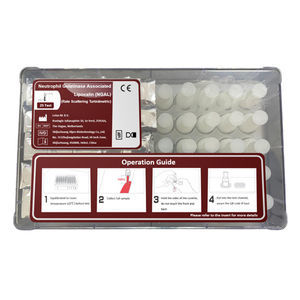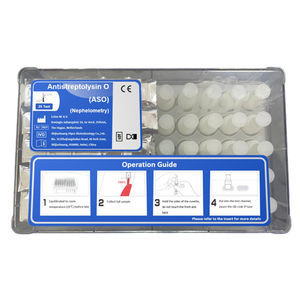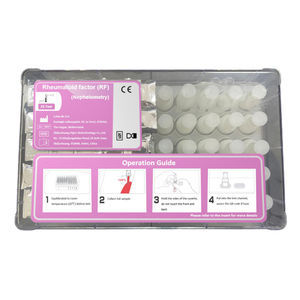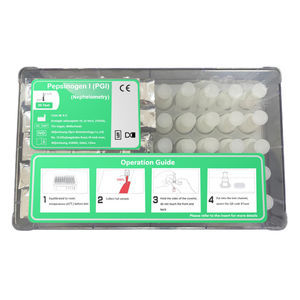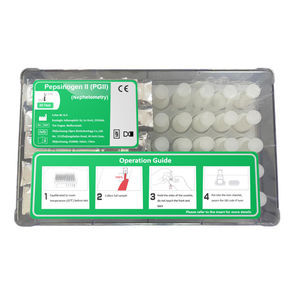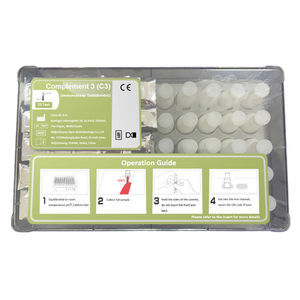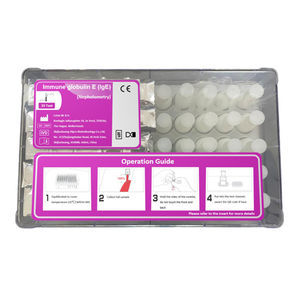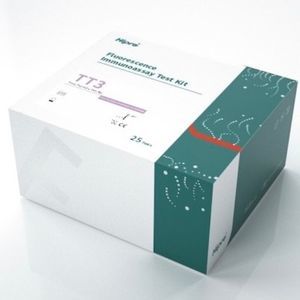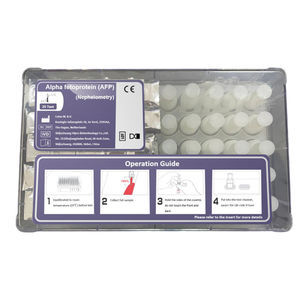
- Laboratory
- Laboratory medicine
- Rapid infectious disease test
- Hipro Biotechnology Co., Ltd.
Serum Amyloid A rapid test for atherosclerosisfor cancersfor infectious diseases
Add to favorites
Compare this product
Characteristics
- Applications
- for atherosclerosis, for cancers, for infectious diseases
- Application field
- oncology
- Tested parameter
- serum Amyloid A
- Micro-organism
- bacteria
- Sample type
- serum, whole blood
- Analysis mode
- turbidimetric
- Result display time
130 s
Description
Serum Amyloid A test kit is mainly used for the bacteria, viral infection, atherosclerosis, coronary heart disease, acute graft rejection, cancer, and other diseases of the auxiliary diagnosis.
Testing Principle of Serum Amyloid A (SAA) Test
This Serum Amyloid A test kit is a liquid dual reagent. It uses Rate Scattering Turbidimetric Method, coating the latex particles with the goat anti-human serum amyloid A.
The serum amyloid A in the sample specifically binds to the corresponding antibody-sensitive latex in the reagent to form an antigen-antibody complex.
This complex causes a change in the scattering intensity at 670 nm incident light.
The rate of change of scattered light intensity is positively correlated with the content of SAA in the sample.
Determine the rate of change of the intensity of the scattered light to calculate the standard SAA content of the sample by the standard curve.
Basic Parameters of Serum Amyloid A (SAA) Test
Packing: 25 Tests/ Kit.
Box Size: 17*10*8cm.
Storage: 2-8℃.
Shelf life: 1 year.
Catalogs
No catalogs are available for this product.
See all of Hipro Biotechnology Co., Ltd.‘s catalogsOther Hipro Biotechnology Co., Ltd. products
Diagnostic Reagents
Related Searches
- Assay kit
- Solution reagent kit
- Blood assay kit
- Serum assay kit
- Immunoassay assay kit
- Plasma assay kit
- Infectious disease detection kit
- Blood rapid diagnostic test
- Protein reagent kit
- Diagnostic reagent kit
- Molecular test kit
- Whole blood detection kit
- Respiratory infection test kit
- Rapid virus test
- Serum rapid diagnostic test
- Plasma rapid diagnostic test
- Clinical assay kit
- Infectious disease rapid diagnostic test
- Whole blood rapid diagnostic test
- Cassette assay kit
*Prices are pre-tax. They exclude delivery charges and customs duties and do not include additional charges for installation or activation options. Prices are indicative only and may vary by country, with changes to the cost of raw materials and exchange rates.



